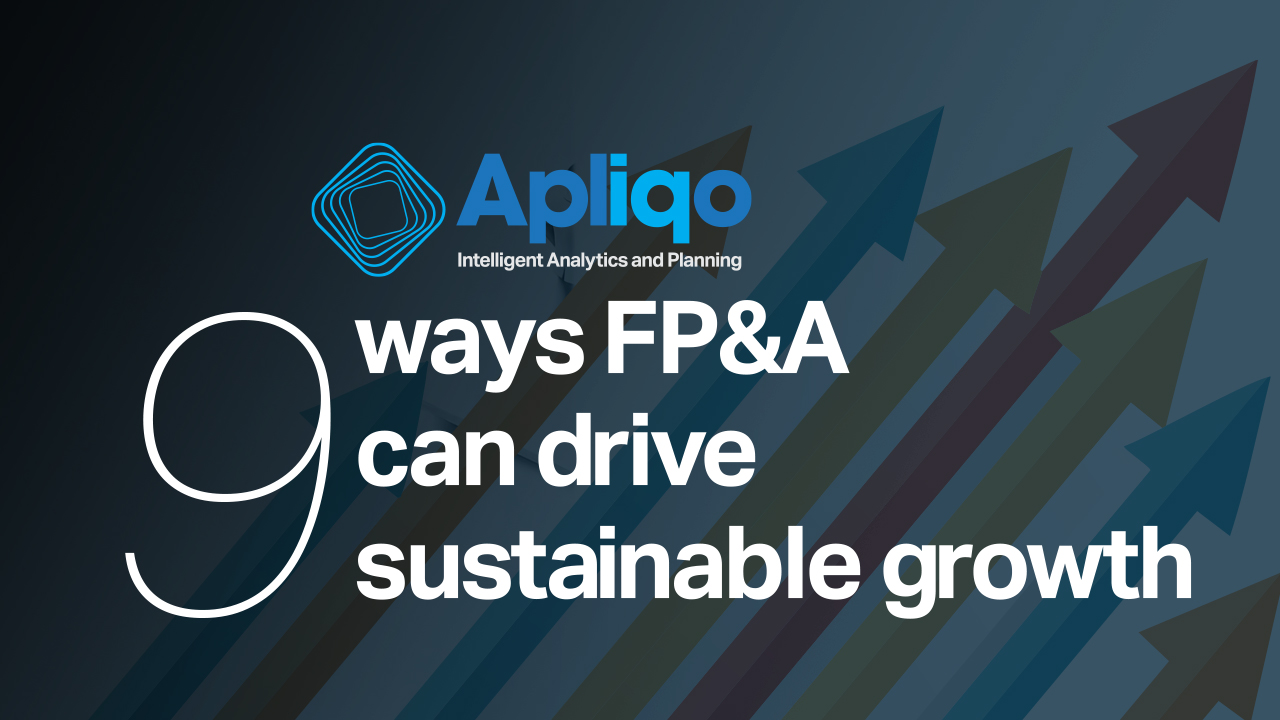Effective cash flow management is more than just a numbers game — it is a strategic imperative. As companies navigate through economic uncertainties and a rapidly evolving market landscape, the ability to forecast, monitor, and analyse cash flow becomes essential for sustaining growth and ensuring long-term stability.
Financial planning and analysis (FP&A) software has emerged as a critical tool in this endeavour, offering real-time insights and robust analytical capabilities that empower decision-makers. In this article, we’ll delve into exactly how you can do this in your own business.
The importance of cash flow management
Cash flow is the lifeblood of any organisation. It determines whether a business can meet its short-term obligations, invest in new opportunities, and maintain operational resilience. Advanced FP&A software offers a data-driven approach to forecasting and monitoring cash flow that greatly improves upon the age-old traditional methods. With a clear view of current liquidity and future cash requirements, businesses can then avoid unexpected shortfalls and position themselves to capitalise on emerging opportunities.
Enhancing cash flow forecasting
One of the most significant advantages of modern FP&A solutions is the ability to produce accurate cash flow forecasts. Using sophisticated algorithms and historical data trends, these tools enable finance teams to model a range of scenarios — from best-case to worst-case — thereby providing a clearer picture of future cash positions. By incorporating variables such as seasonal fluctuations, customer payment cycles, and market trends, FP&A software helps organisations anticipate periods of cash surplus or deficit.
Customisable forecasting models allow businesses to integrate data from multiple sources, ensuring that forecasts are not only precise but also reflective of the entire organisation’s dynamics. For example, by consolidating insights from various departments or geographical regions, finance professionals can create a holistic cash flow model. You can take things further still with something like Apliqo UX which offers intuitive dashboards and user-friendly features that simplify the complexities of cash flow forecasting, making it accessible even to non-specialist users.
Monitoring cash flow performance in real-time
While forecasting is crucial, continuous monitoring of cash flow performance in the present is equally important. Real-time dashboards allow organisations to track cash inflows and outflows as they happen. This immediate visibility into financial performance ensures that any deviations from expected patterns are identified and addressed promptly.
Setting up key performance indicators (KPIs) and automated alerts within the software enables finance teams to monitor critical metrics such as liquidity ratios, working capital levels, and operating cash flow. For instance, an alert triggered by an unexpected drop in receivables can prompt an early investigation, potentially preventing a minor issue from escalating into a significant problem. These insights provide a real-time pulse on the organisation’s financial health – which is critical for agile decision-making.
Analysing cash flow trends and risk factors
Beyond the basics of forecasting and monitoring lies the in-depth analysis of cash flow trends — a process that can reveal underlying risks and opportunities. Advanced FP&A software comes equipped with analytical tools designed to sift through historical data, identify patterns, and pinpoint potential risk factors. By evaluating the timing of receivables and payables, finance professionals can gain valuable insights into the efficiency of the cash conversion cycle and the potential for operational bottlenecks.
Scenario analysis is another powerful feature that allows organisations to simulate various external shocks — such as sudden market downturns, supply chain disruptions, or regulatory changes — and assess their potential impact on cash flow. This kind of proactive analysis not only helps in risk mitigation but also supports strategic planning, ensuring that the business remains agile and prepared for future challenges.
Leveraging integrated financial planning and analysis
This all comes together when it is integrated with other financial and operational systems. By connecting ERP systems, accounting software, and operational databases, organisations can create a unified financial ecosystem where data flows seamlessly between departments. This integration breaks down silos, providing a single source of truth that enhances accuracy and transparency in cash flow management.
When done well, cash flow forecasts, budgets, and performance reports are all aligned. This holistic view not only streamlines the planning process but also ensures that cash flow strategies are developed in tandem with broader financial objectives. The Apliqo suite of solutions, for example, has been designed with this integration in mind — offering an interface that not only bridges the gap between disparate data sources but also presents them in an easily digestible format for informed decision-making.
Embracing technology for future growth
It’s clear to see that the next wave of transformation in cash flow management is being driven by artificial intelligence. AI-powered forecasting models are set to revolutionise financial planning, making cash flow analysis more intuitive, sophisticated, and ultimately more valuable for decision-makers. By leveraging machine learning algorithms, businesses can detect trends that might otherwise go unnoticed, predict cash flow fluctuations with greater precision, and automate complex analyses in real-time.
Here at Apliqo, we recognise the immense potential of AI in reshaping financial planning and are actively exploring ways to integrate these advancements into our solutions. By harnessing AI-driven insights, companies will soon be able to make even faster, more accurate decisions — helping them stay ahead in an increasingly dynamic business environment. It’s critical to embrace these changes if you hope to grow and stay relevant in the new world to come.
The role of collaboration in cash flow optimisation
While technology plays a pivotal role in optimising cash flow management, the human element remains indispensable. Effective cash flow management requires a collaborative approach, where insights are shared across departments and decisions are made collectively. FP&A software facilitates this collaboration by providing a common platform where finance, operations, and strategy teams can work together toward a unified goal.
Regular cross-functional meetings, supported by shared dashboards and real-time data, ensure that everyone has a clear understanding of the organisation’s financial health. This collaborative environment fosters transparency and accountability, enabling teams to identify opportunities for improvement and implement changes swiftly. By integrating insights from various stakeholders, organisations can develop more robust cash flow strategies that are reflective of the entire business ecosystem.
Conclusion
Optimising cash flow management is a continuous journey that combines the power of advanced technology with strategic foresight and collaborative teamwork. In an increasingly complex and unpredictable business landscape, FP&A software offers the tools necessary to forecast, monitor, and analyse cash flow with a level of precision that traditional methods simply cannot match.
As companies continue to navigate the challenges of modern business, a proactive, data-driven approach to cash flow management will remain the cornerstone of financial resilience and strategic advantage.
If you’re looking for FP&A software with intuitive design, robust forecasting capabilities, and real-time monitoring features, then Apliqo is for you. Get in touch today and let’s see how we can help!







